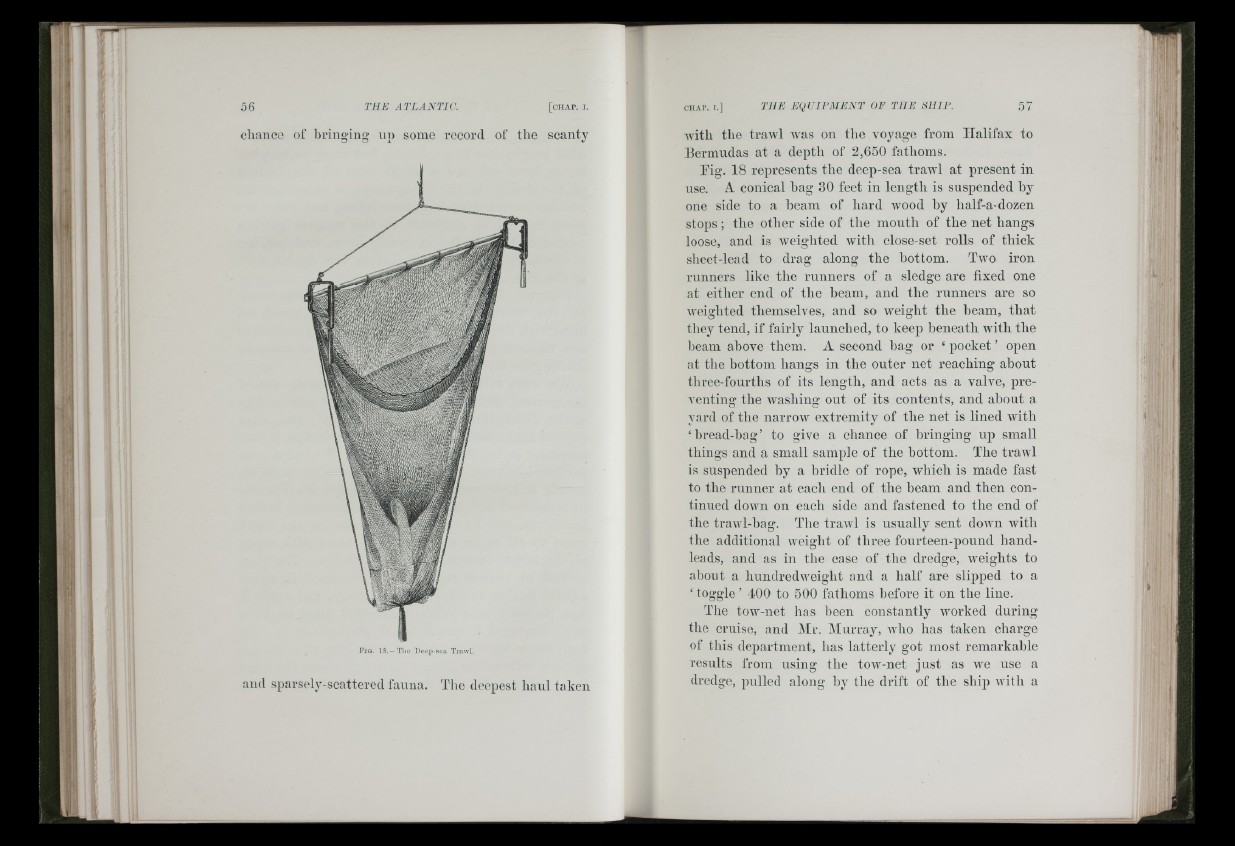
cliancc of bringing un some record of tbe scanty
Fig . is . —Tiie Deep-sea Trawl.
and sparsely-scattered fauna. Tbe deepest baul taken
Avitb tbe trawl AA’as on tbe A’oyage from Halifax to
Bermudas at a deptb of 2,650 fatboms.
Fig. 18 represents tbe deep-sea trawl at present in
use. A conical bag 30 feet in lengtb is suspended by
one side to a beam of bard wood by half-a-dozen
stops; tbe otber side of tbe mouth of the net hangs
loose, and is weighted with close-set rolls of thick
sheet-lead to drag along the hottom. Two iron
runners like the runners of a sledge are fixed one
at either end of the beam, and the runners are so
AA’eighted themselves, and so weight the beam, that
they tend, if fairly launched, to keep beneath with the
l)eam above them. A second hag or ‘ pocket ’ open
at the hottom hangs in the outer net reaching about
tbree-fourths of its length, and acts as a valve, preventing
the washino' out of its contents, and ahout a
yard of the narrow extremity of the net is lined with
‘ bread-bag’ to give a chance of bringing up small
things and a small sample of the hottom. The traAvl
is suspended hy a bridle of rope, which is made fast
to the runner at each end of the beam and then continued
down on each side and fastened to the end of
the trawl-hag. The trawl is usually sent down with
the additional weight of three fourteen-pound band-
leads, and as in tbe case of tbe dredge, W’eigbts to
about a bundredAveigbt and a balf are slipped to a
‘ toggle ’ 400 to 500 fatboms before it on tbe line.
Tlie toAV-net bas been constantly Avorked during
tbe cruise, and Mr. Murray, wbo bas taken charge
of tliis department, bas latterly got most remarkable
results from using tbe toAv-net just as ^ye use a
dredge, pulled along by tbe drift of the ship Avitb a
,!"t 1